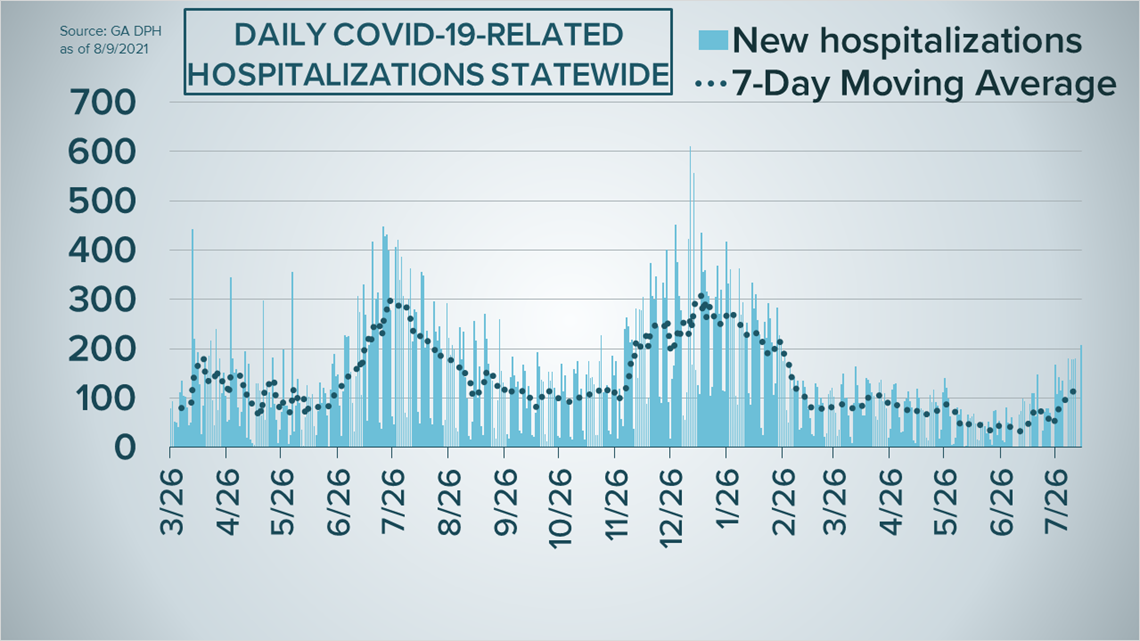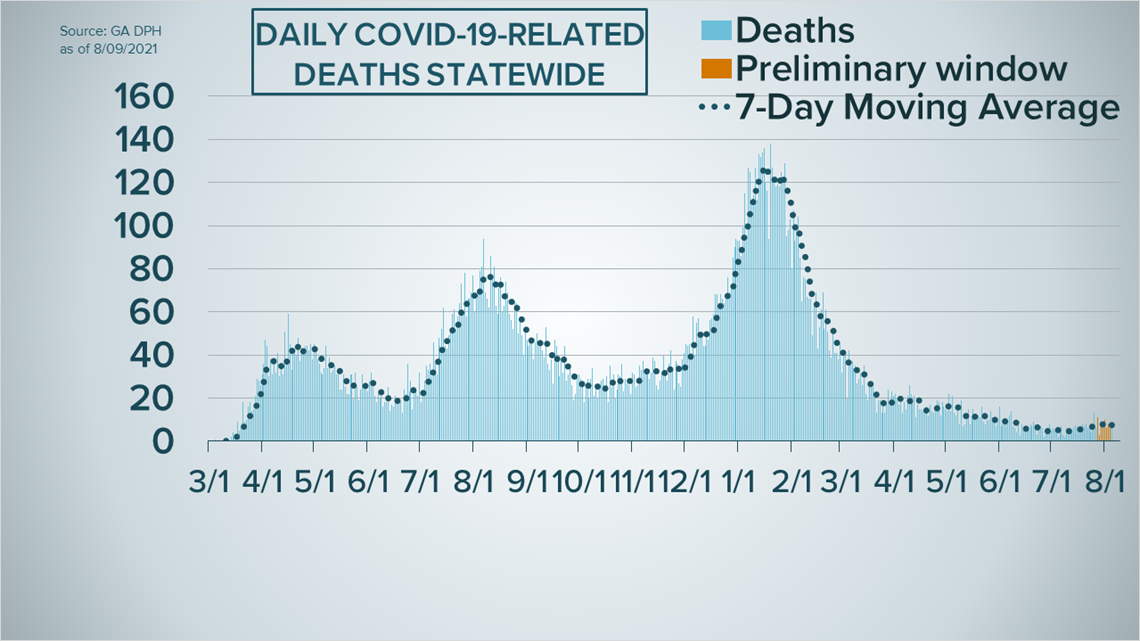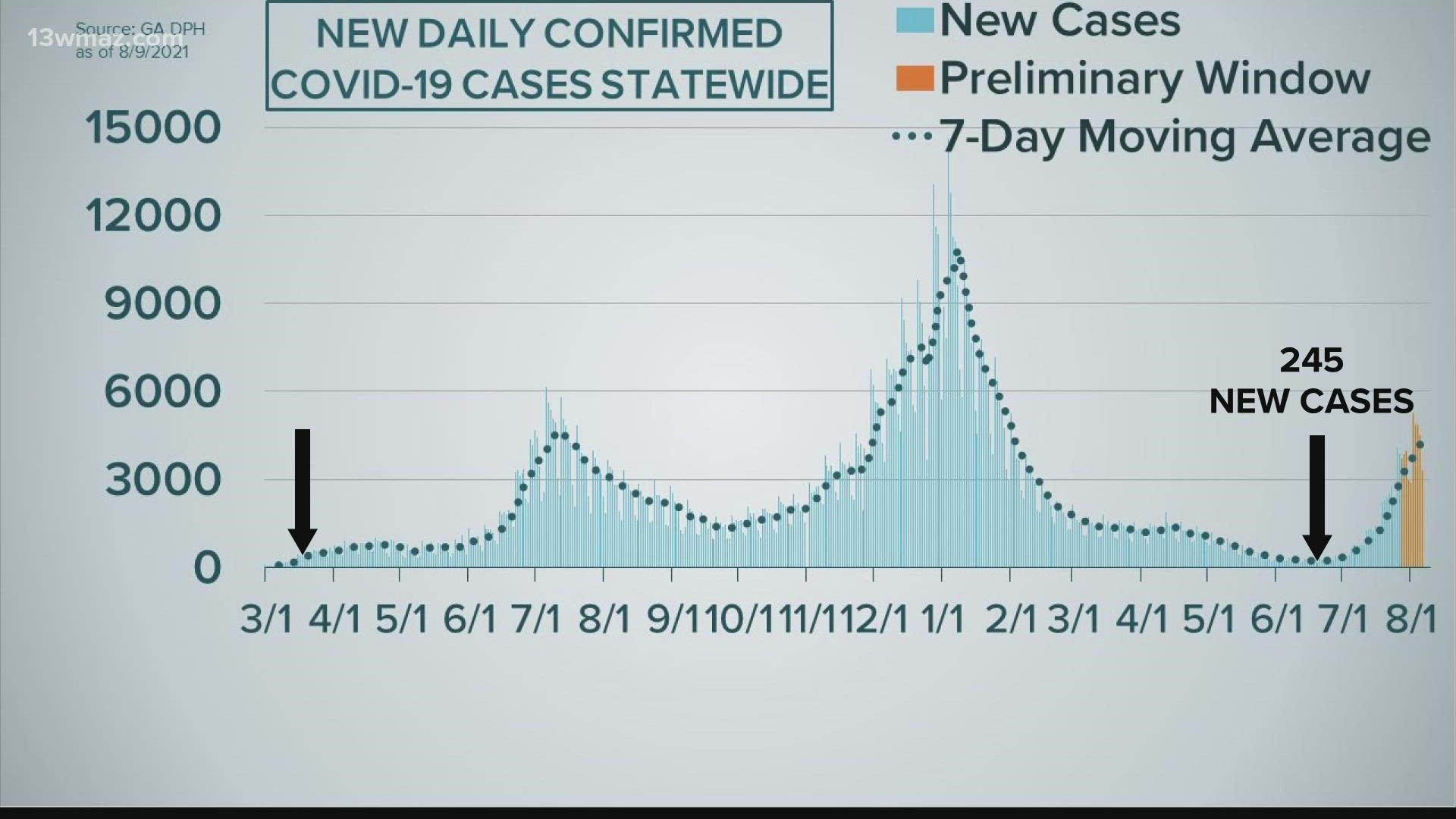MACON, Ga. — Georgia's statewide COVID-19 case curve shows more than 50 days of increasing cases since mid-June.
Less than two months ago, Georgia's daily cases dropped to levels similar to the very early days of the pandemic, averaging around 245 new cases a day.
The curve reversed course in mid-June and hit just shy of 4,200 new cases a day last week. That number falls within the state's two-week preliminary data window, so it will likely climb even higher as the state gets more test results counted.
That is compare that to the peak Georgia saw in July of 2020 when the state averaged close to 4,700 new cases a day.
The CDC reports the Delta variant makes up more than 60 percent of new cases in Georgia.
Bibb County has one of the highest spread rates in central Georgia. Last week, Bibb averaged 92 new cases a day within the preliminary window. That's up from just three new cases a day at the end of June. Bibb's average is also climbing closer to the peak of 114 new cases a day in July of 2020.
Houston County's average sits a little lower at 87 new cases a day, which is up from two in mid-June. Houston saw a smaller peak than Bibb last summer, topping out at 54 new cases a day, so it is already above that mark.
Laurens County also shows one of the higher spread rates in central Georgia. In mid-June, Laurens averaged fewer than one new case a day, but that has now climbed to at least 32.
As kids start school, statewide data from the Department of Public Health shows more kids under 17 years old getting the virus than in the 60 and up age range right now. Most people who get sick still fall within the 30 to 59 range.


Meanwhile, Georgia's average new hospitalizations doubled in the last two weeks. Right now, the state averages 126 new patients a day. Hospitalization levels have not been that high since March.


For the first time in six months, deaths from COVID-19 are climbing. Georgia averaged around four deaths a day in mid-July. That doubled to eight by the beginning of August. That falls within the preliminary window, so that tally could climb higher.
While these numbers are still nowhere near the almost 130 deaths a day reported in January, this is something to watch closely to see if this trend continues, because deaths lagged in earlier peaks.

